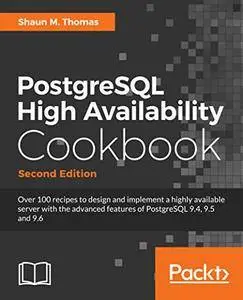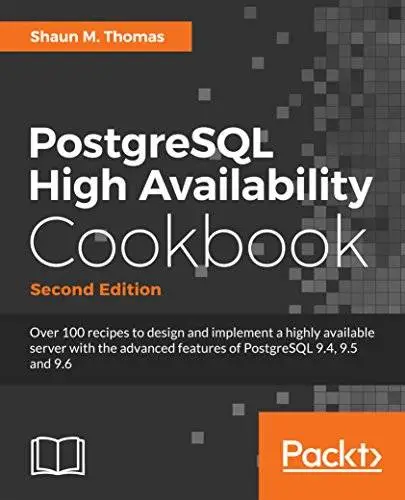PostgreSQL High Availability Cookbook - Second Edition by Shaun M. Thomas
English | 6 Mar. 2017 | ISBN: 178712553X | 940 Pages | PDF (conv) | 6.03 MB
English | 6 Mar. 2017 | ISBN: 178712553X | 940 Pages | PDF (conv) | 6.03 MB
Key Features
Create a PostgreSQL cluster that stays online even when disaster strikes
Avoid costly downtime and data loss that can ruin your business
Updated to include the newest features introduced in PostgreSQL 9.6 with hands-on industry-driven recipes
Book Description
Databases are nothing without the data they store. In the event of a failure - catastrophic or otherwise - immediate recovery is essential. By carefully combining multiple servers, it's even possible to hide the fact a failure occurred at all.
From hardware selection to software stacks and horizontal scalability, this book will help you build a versatile PostgreSQL cluster that will survive crashes, resist data corruption, and grow smoothly with customer demand. It all begins with hardware selection for the skeleton of an efficient PostgreSQL database cluster. Then it's on to preventing downtime as well as troubleshooting some real life problems that administrators commonly face. Next, we add database monitoring to the stack, using collectd, Nagios, and Graphite. And no stack is complete without replication using multiple internal and external tools, including the newly released pglogical extension. Pacemaker or Raft consensus tools are the final piece to grant the cluster the ability to heal itself. We even round off by tackling the complex problem of data scalability.
This book exploits many new features introduced in PostgreSQL 9.6 to make the database more efficient and adaptive, and most importantly, keep it running.
What you will learn
Protect your data with PostgreSQL replication and management tools such as Slony, Bucardo, pglogical, and WAL-E
Hardware planning to help your database run efficiently
Prepare for catastrophes and prevent them before they happen
Reduce database resource contention with connection pooling using pgpool and PgBouncer
Automate monitoring and alerts to visualize cluster activity using Nagios and collected
Construct a robust software stack that can detect and fix outages
Learn simple PostgreSQL High Availability with Patroni, or dive into the full power of Pacemaker.



